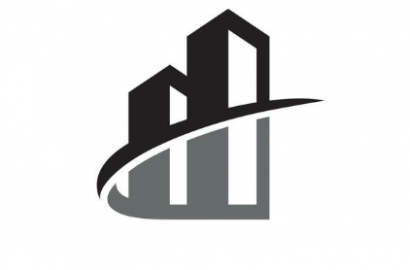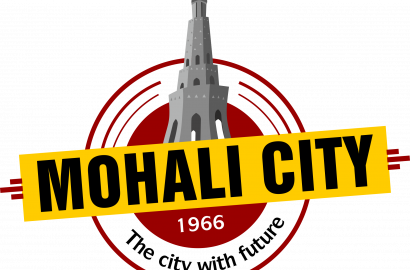Metro's Impact on Tricity Real Estate: Unlocking New Frontiers

It is abundantly obvious from examining the specifics of the metro route alignment that the regions slated for metro access have significant real estate expansion potential.
The metro rail network, which is the most revolutionary infrastructure project for the Chandigarh capital region, promises to significantly increase connectivity throughout the Tricity, which consists of Chandigarh, Panchkula, and Mohali. The metro's Phase 1 will traverse 82 km and have 67 stations that will serve important locations. Its goal is to improve livability and reduce traffic.
It is abundantly obvious from examining the specifics of the metro route alignment that the regions slated for metro access have significant real estate expansion potential. Property markets typically witness an upsurge near mass rapid transit lines globally, whether as a result of increased physical connectivity or greater investor interest. As Tricity's implementation picks up momentum as well, let's look at some of the major locations that will eventually become real estate hotspots.
Starting at the Chandigarh municipal borders, a 12-km line with 11 stations connecting Sectors 39 and 26 will provide the southern regions with enhanced access to the north and central areas of the city. It is anticipated that demand for residential floors and plots in condominium buildings will increase in the vicinity of stations such as Transport Chowk, Dudhera, and Industrial Area Phase 1. A greater number of integrated township projects may actually be seen presently, south of Madhya Marg, because of the impending metro linkage.
A major promise to alleviate the problems with East-West connectivity through intermediate stations like Rose Garden and Sector 42 is the almost 14-kilometer subterranean line from the Sukhna Lake station at Sector 1, which passes past important institutional centres including PGIMER, Panjab University, and ISBT 43. The simplicity of travelling between medical centres educational centres and satellite towns may cause the demand for student housing and rentals to peak.
This line's metro station at the Chandigarh airport will facilitate easier access from Zirakpur as well as Mohali, which will affect nearby property values.
The Sukhna to Airport section is essentially destined to become a model transit-oriented development corridor. Highlights for real estate in Mohali near the metro, aside from the airport station, are the Quark City station close to Longowal on the way to the airport and later phases' sectors 71, 86, and 90. Sectors surrounding metro stations, which are already developing as residential hubs, ought to witness an increase in planned constructions and high-end condominiums from organised players. Similarly, destinations such as New Chandigarh and Transport Nagar will increase the allure of their particular localities.
Similar to this, substantial real estate development is anticipated in Panchkula around later phases like Pinjore and Kalka, in addition to dedicated highways connecting Mansa Devi Complex to Sectors 5 and 24. Anticipated commercial growth in the vicinity of metro stations, extending beyond Phase 1 like IT Park, would eventually extend the reach of cybercity into novel micro-markets.
As a result, it is abundantly clear that having access to the metro will significantly increase the allure of important routes connecting Chandigarh's urban core to its nearby communities. A rise in end-user demand as well as investor interest is possible with improved livability and proximity to job areas. Taking into account the suggested route expansions, developing areas outside of known pockets begin to have significant potential to develop into self-sufficient micro markets. To determine growth trajectories, it will be essential to identify these places early on, even with the use of data analytics.
Therefore, taking into account the metro variable becomes essential for land owners and developers not only when allocating resources but also when building projects that are in line with future infrastructure. Demand-centric planning can engage new catchments, as mobility redefines accessible parameters and regulatory changes like single-window clearance spur integrated buildings. The metro heralds these potentials. Product orientations will need to be adjusted to catch the next growing wave on the metro railroads, whether it be township projects or upscale condominiums!
The broader picture indicates that as metro phases advance, they will actually open up new opportunities for real estate throughout the capital region!
(By LC Mittal, Director, Motia Group. Views are personal)
Related posts:
One Group Bets Big on Mohali with ₹1200 Cr Real Estate Investment! With plans for low-rise floors, plots, and group housing, the developer is set to transform prime sectors of Mohali. Land acquisition is complete, and project launches are expected...
Zirakpur Bypass Six Lane Project Cleared at Rs 1878 Cr: Check Points! This major infrastructure development aims to decongest Zirakpur and Panchkula by rerouting traffic from NH-7 and NH-5. Spanning 19.2 km, the bypass will improve connectivity to Himachal and...


 One Group Bets Big on Mohali with ₹1200 Cr Real Estate Investment!
One Group Bets Big on Mohali with ₹1200 Cr Real Estate Investment!
 Zirakpur Bypass Six Lane Project Cleared at Rs 1878 Cr: Check Points!
Zirakpur Bypass Six Lane Project Cleared at Rs 1878 Cr: Check Points!
 Commercial Property in Mohali Sells for ₹83 Crore!
Commercial Property in Mohali Sells for ₹83 Crore!
 Real Estate Update: Sales & Supply Dip in 2024’s Major Cities!
Real Estate Update: Sales & Supply Dip in 2024’s Major Cities!
 Singhpura Flyover Opens, Chaos Erupts on Day One of Traffic Flow!
Singhpura Flyover Opens, Chaos Erupts on Day One of Traffic Flow!


